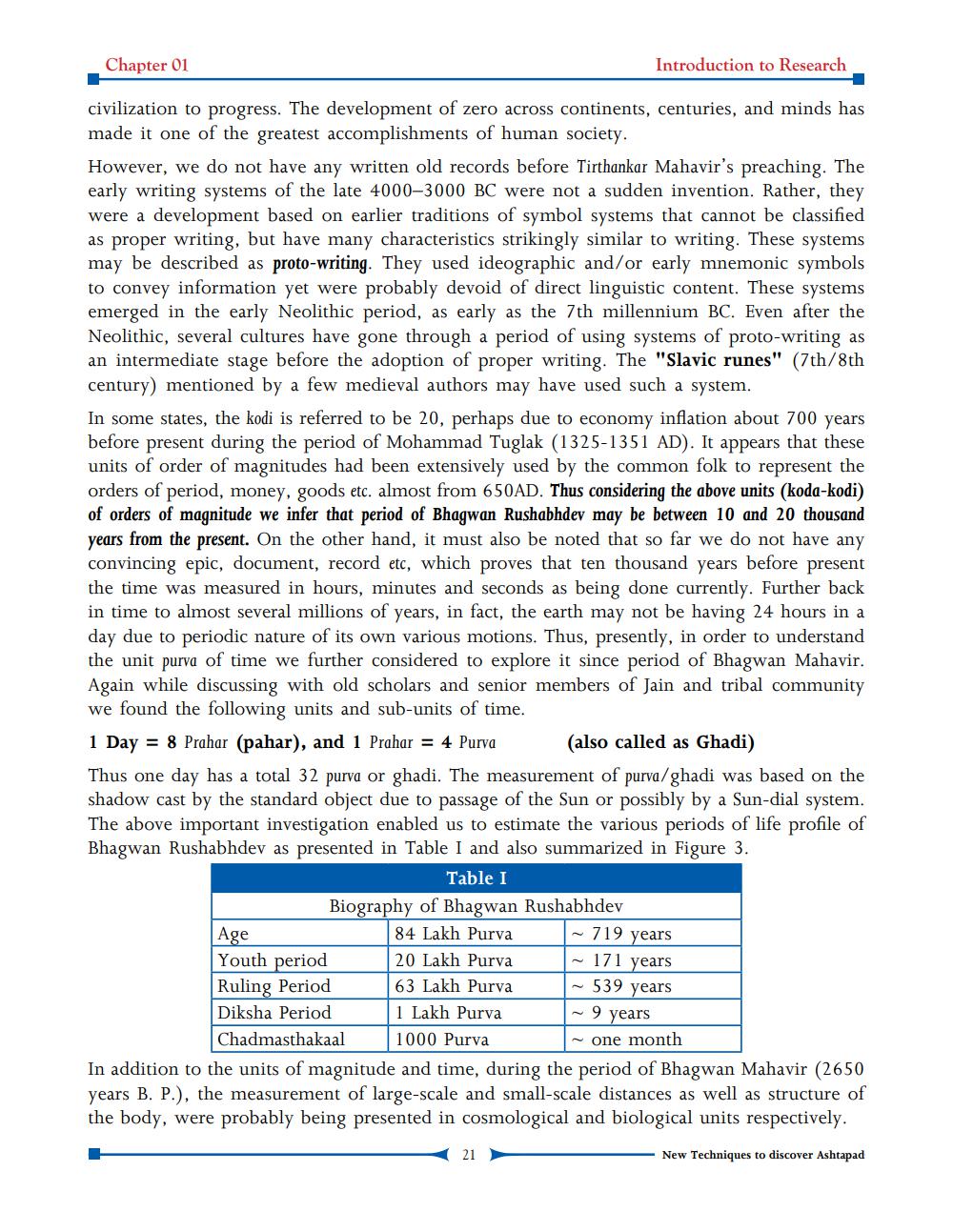________________
Chapter 01
Introduction to Research
civilization to progress. The development of zero across continents, centuries, and minds has made it one of the greatest accomplishments of human society. However, we do not have any written old records before Tirthankar Mahavir's preaching. The early writing systems of the late 4000-3000 BC were not a sudden invention. Rather, they were a development based on earlier traditions of symbol systems that cannot be classified as proper writing, but have many characteristics strikingly similar to writing. These systems may be described as proto-writing. They used ideographic and/or early mnemonic symbols to convey information yet were probably devoid of direct linguistic content. These systems emerged in the early Neolithic period, as early as the 7th millennium BC. Even after the Neolithic, several cultures have gone through a period of using systems of proto-writing as an intermediate stage before the adoption of proper writing. The "Slavic runes" (7th/8th century) mentioned by a few medieval authors may have used such a system. In some states, the kodi is referred to be 20, perhaps due to economy inflation about 700 years before present during the period of Mohammad Tuglak (1325-1351 AD). It appears that these units of order of magnitudes had been extensively used by the common folk to represent the orders of period, money, goods etc. almost from 650AD. Thus considering the above units (koda-kodi) of orders of magnitude we infer that period of Bhagwan Rushabhdev may be between 10 and 20 thousand years from the present. On the other hand, it must also be noted that so far we do not have any convincing epic, document, record etc, which proves that ten thousand years before present the time was measured in hours, minutes and seconds as being done currently. Further back in time to almost several millions of years, in fact, the earth may not be having 24 hours in a day due to periodic nature of its own various motions. Thus, presently, in order to understand the unit purva of time we further considered to explore it since period of Bhagwan Mahavir. Again while discussing with old scholars and senior members of Jain and tribal community we found the following units and sub-units of time. 1 Day = 8 Prahar (pahar), and 1 Prahar = 4 Purva (also called as Ghadi) Thus one day has a total 32 purva or ghadi. The measurement of purva/ghadi was based on the shadow cast by the standard object due to passage of the Sun or possibly by a Sun-dial system. The above important investigation enabled us to estimate the various periods of life profile of Bhagwan Rushabhdev as presented in Table I and also summarized in Figure 3.
Table I Biography of Bhagwan Rushabhdev Age
84 Lakh Purva - 719 years Youth period 20 Lakh Purva - 171 years Ruling Period 63 Lakh Purva - 539 years Diksha Period 1 Lakh Purva ~ 9 years Chadmasthakaal 1000 Purva
- one month In addition to the units of magnitude and time, during the period of Bhagwan Mahavir (2650 years B. P.), the measurement of large-scale and small-scale distances as well as structure of the body, were probably being presented in cosmological and biological units respectively.
eriod
21
- New Techniques to discover Ashtapad




